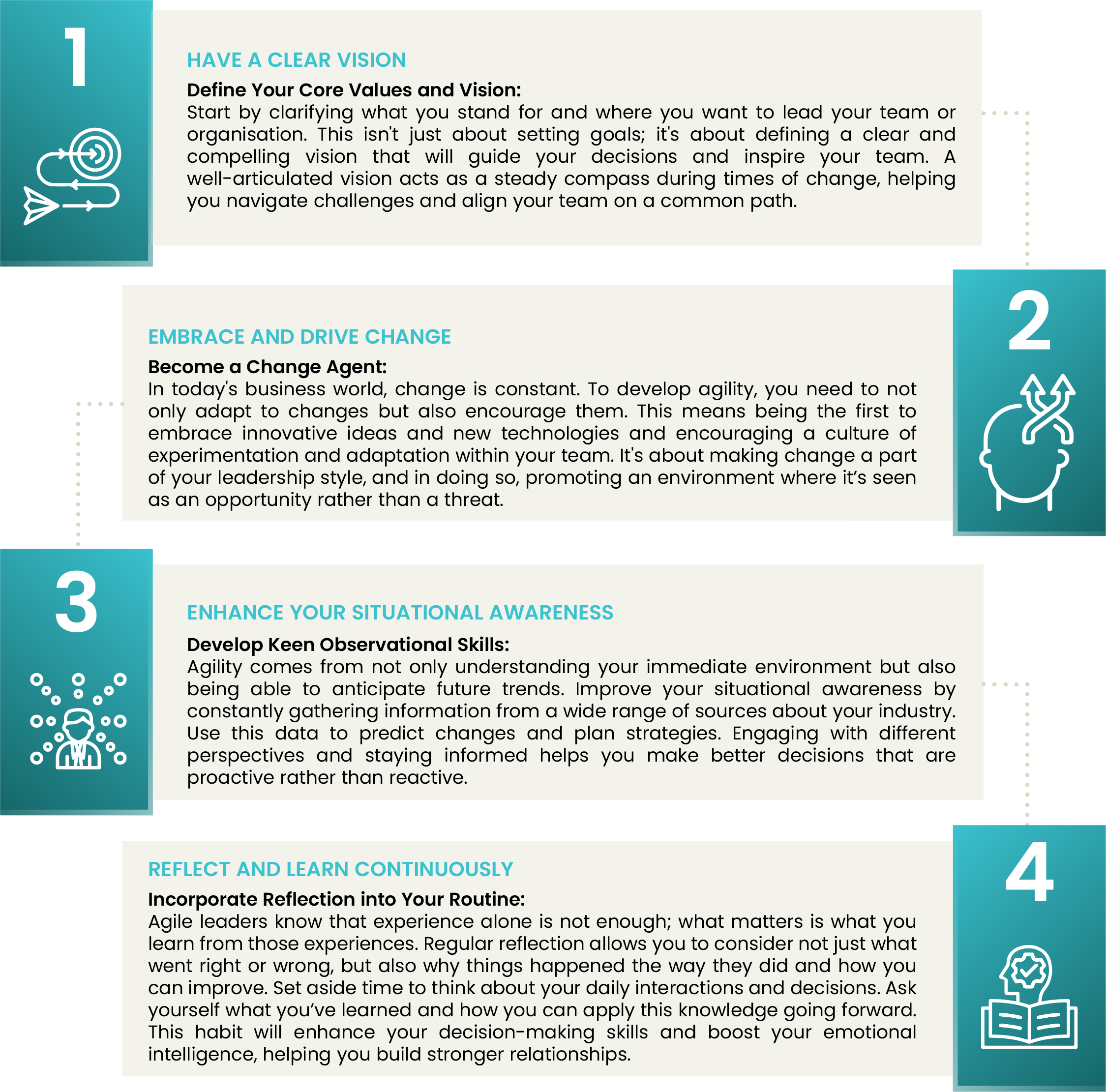

The importance of leadership agility in today’s business environment
Today’s business environment is among the most competitive and dynamic globally. Leaders in the UAE and across the GCC face unique challenges such as sustained diversification, ongoing regulatory changes, and the global digital revolution. To maintain a competitive edge, it’s therefore crucial not just to react but to proactively anticipate and adapt to future trends and challenges.
Leadership agility is vital in this context. According to research from the MIT Sloan Management Review, agile organisations not only grow faster; they generate profits that are 22% to 25% higher than those operating under traditional management models.
But what exactly is leadership agility, and why is it so crucial for success in the UAE?

Phil Gibbins
Commercial Director
Defining leadership agility
With the rapid pace of change in today’s business world, sticking solely to old patterns isn’t enough. Leaders need to continuously update their perspectives and methods to effectively tackle new challenges and seize fresh opportunities. This is where the concept of leadership agility comes into play.
Leadership agility really boils down to a leader’s knack for thinking on their feet and responding to new situations as they come up.
A Harvard Business School survey of 1,500 executives underscores this, with 71% of respondents identifying adaptability as the most important leadership quality. This means being able to spot problems or opportunities early on so you can handle them proactively, rather than just reacting as they happen.
Bill Joiner and Stephen Josephs really pushed this idea forward in their book, “Leadership Agility.” They show that agile leaders are great at seeing different outcomes, making smart choices quickly and crucially, involving others in the decision-making process.


A collective effort
According to statistics gathered by the career resource website, Zippia, only around 48% of employees believe their company has high-quality leadership so the ability to encourage engagement across an organisation is key.
Leadership is far from a solo endeavor. It’s an interplay that involves every member of an organisation, demanding participation and contribution from all levels. To truly embed agility within a business, leaders must champion a culture of collaboration and facilitate open communication and teamwork across departments. This enables the flow of ideas and quick implementation of new initiatives. It’s an acknowledgment that agility is not solely the responsibility of the individual, but a collective attribute of the entire organisation.
Leaders should regularly assess their own roles in operational workflows to ensure they are facilitating rather than obstructing agility and also instilling a sense of ownership and motivation among team members.
Why agility matters in leadership
Agile leadership essentially involves understanding complex scenarios quickly, predicting market trends effectively, and steering through business uncertainties with confidence.
Take, for instance, the foresight shown by leaders in the renewable energy sector. As global priorities shift towards sustainability, agile leaders in the UAE and other GCC nations have been quick to pivot, incorporating green technologies and sustainable practices into their business models ahead of regulatory demands. This not only positions their companies as industry leaders but also aligns them with broader economic shifts towards sustainability.
Equally, during unexpected global events like the COVID-19 pandemic, agile leaders were at the forefront, rapidly adapting their operations to remote working to ensure continuity while also reevaluating their business strategies to align with the changed economic landscape. This ability to swiftly adapt and innovate under pressure is what sets agile leaders apart, enabling their organisations to thrive in a marketplace where change is the only constant.
Evidently then this is a skill that’s worth cultivating, but how do you go about doing it?

By implementing these strategies, you can develop the agility needed to lead effectively. Each step is designed to help you build resilience, think strategically, and enhance your leadership capabilities in meaningful ways. Remember, the goal is to not just manage the complexities of today but to thrive in the unpredictabilities of tomorrow.
To download this article as a PDF or to find out more about PROTRAINING Learning Solutions, please complete the form below.
